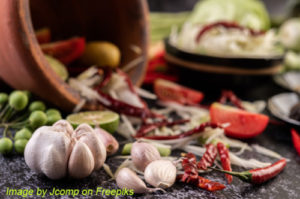Sisig pizza is one of the creative Pinoy version of the popular pizza. And its a fusion between a popular Western and European food with our local dish which is pork sisig. Actually this is not a new kind of local pizza because this already existed many years back and served in a local fast food chain but I think it didn’t last long on their menu. I don’t know why but it is still served in some local restaurants that serve specialty Filipino dishes.
I this recipe, I prefer a thin pizza crust which you can buy in supermarkets but you can also make your own if you have the patience. Just search online and you can find recipes of thin pizza crust. I also have a simple easy to cook pork sisig here in this recipe blog but to make things even simpler, you can buy a cooked or frozen sisig and just assemble it with your pizza. Of course you have to thaw and cook the frozen sisig first before putting it in your pizza.
Sisig Pizza: A Filipino Twist on a Global Favorite
Growing up in Pampanga, the so-called culinary capital of the Philippines, we were surrounded by the smell of sizzling sisig from every corner. My Tito Nards, who ran a small carinderia near the market, swore by his secret sisig recipe—chopped pork cheeks, liver, calamansi, onions, and just the right kick of sili. I still remember him, cigarette tucked behind his ear, flipping the sizzling mix on his iron plate like it was second nature.
Fast forward years later, my cousin Mylene from Quezon City messaged me a photo of something I had never seen before—sisig on pizza. I laughed at first. I mean, we Pinoys can turn anything into a pizza topping, but that? Then I tried it. It was bold. Rich. Cheesy. Spicy. Crispy and gooey in one bite. And it made perfect sense. That was the beginning of my obsession with sisig pizza.
A Brief History of Sisig and How It Ended Up on Pizza
Before we dive into the how-to, let’s take a quick look back. Sisig isn’t just any pulutan—it’s a cultural icon. Traditionally made from pig’s head parts, it originated in Pampanga and was first documented in 1732 in a Kapampangan dictionary as a salad dish made with green papaya or green guava marinated in vinegar. It evolved over time into the sizzling dish we now know and love, thanks in large part to Lucia Cunanan, affectionately called “Aling Lucing,” who turned it into the pork dish served on a hot plate.
Pizza, of course, is as Italian as it gets, but we Filipinos have a way of making any foreign dish feel at home. Combining the bold flavors of sisig with the cheesy, crispy crust of pizza isn’t just a fusion—it’s a conversation starter. It’s comfort food that bridges cultures.
Why Thin Crust Works Best for Sisig Pizza
Let’s talk about the crust. For this recipe, I went with thin crust, the kind you can grab at the supermarket. My Ate Liza always told me, “Pag mabigat na yung toppings, huwag mo nang gawing makapal yung tinapay.” She’s right. Sisig is already rich and flavorful, so keeping the base light balances everything out.
You can make your own dough, sure—but when you’re craving something quick and satisfying, pre-made crusts are a lifesaver. Just make sure they’re not the sweet kind. You want neutral, crispy, and firm enough to hold the toppings without going soggy.
Shortcuts You’ll Love (and Why They Still Work)
I know not everyone has the time or energy to cook pork sisig from scratch. That’s okay. I’ve tried this recipe using frozen sisig from the grocery, and it works just as well. Just make sure to thaw and pan-fry it first to bring back that sizzle and flavor. Reheating helps evaporate excess moisture, which is key so your pizza doesn’t turn soggy.
The technique is simple but makes a big difference—crisping up the sisig before putting it on your crust enhances the texture and flavor, letting it hold up against the melted cheese and rich sauce.
Bringing It All Together: How I Make Sisig Pizza at Home
First, I lay out the crust on a clean board and spread a generous amount of pizza sauce. You can use ready-made spaghetti sauce in a pinch—it works fine. Then comes the cheese. Mozzarella, lots of it. If you want extra creaminess, a little cheddar won’t hurt.
Then I add the sisig, now crispy and sizzling, spread evenly over the cheese. For toppings, I go with green chilies, sliced red onions, and if I’m feeling extra, I crack an egg right in the center before baking.
At 400°F, this beauty goes into the oven for about 10 to 12 minutes—until the cheese bubbles and the crust turns golden on the edges.
When it comes out, that aroma of sisig and melted cheese fills the kitchen. One slice and you’ll understand why this Filipino-style pizza has a place in the modern Pinoy kitchen.
Sisig Pizza: More Than Just a Trend
Some say this dish is just a fad, but I disagree. It’s a reflection of our creativity, our resourcefulness, and our love for sharing food with a twist. I’ve made this for barkada nights, Sunday lunches, even for my son’s birthday party. Each time, it disappears faster than I can slice it.
Sisig pizza is more than a snack. It’s a reminder that tradition can evolve, that family recipes can be reborn in unexpected forms, and that the kitchen is a place for both memory and invention.
If you’ve never tried it, now’s the time. Whether you make your own crust or grab a ready-made one, whether you cook the sisig from scratch or use the one from your favorite takeout place—just try it. You might be surprised at how good it feels to put a little bit of your heritage on something as universal as pizza. And who knows? Maybe it’ll become a new family favorite in your home, just like it did in mine.
How to Make Sisig Pizza
Ingredients
- 2 pcs thin pizza crust 10 inches (store bought or home made)
- 1/2 cup Italian style pizza sauce
- 1/2 cup mozzarella cheese grated
- 2 pcs raw egg
- 3 pcs green finger chilies sliced diagonally (optional)
- 1 pc white onion chopped
- 150 grams cooked pork sisig
Instructions
How to Make Sisig Pizza:
- Preheat oven to 400°F.
- Put the pizza crusts on a clean flat surface then spread pizza sauce evenly on the surface of the crust covering entirely.
- Spread the grated mozzarella cheese on the top of each of the pizza crust with the pizza sauce. Then spread the cooked pork sisig on top of the cheese and pizza sauce.
- Garnish with green chilies and onions. Then crack one raw egg on the center of each pizza.
- Place the pizzas in the oven and bake for 8 to 15 minutes or until the cheese is melted and crust is a little toasted on the sides.
- Serve with your favorite juice or softdrinks.
Notes
Cooking Tips:
Crisp Up the Sisig Before Topping
Before adding the sisig to your pizza, reheat it in a hot pan until it’s sizzling and slightly crispy. This helps reduce excess moisture, which can make your crust soggy. Crisp sisig also adds texture and a richer, deeper flavor to every bite.Don’t Overload the Toppings
While it’s tempting to pile on the sisig and cheese, too much can weigh down the crust and cause uneven baking. A thin, even layer lets the crust stay crispy and the toppings cook properly. Remember, balance is key—let each ingredient shine without overpowering the others.Crack the Egg Midway Through Baking
If you're adding a raw egg on top, bake the pizza for 5 minutes first, then carefully crack the egg in the center and return it to the oven. This keeps the egg from overcooking while still letting the white set nicely and the yolk stay runny. It’s a simple step that adds creaminess and visual appeal to your sisig pizza.






Leave a Reply